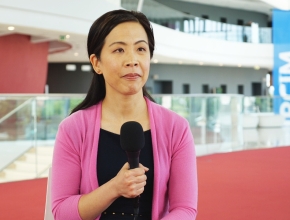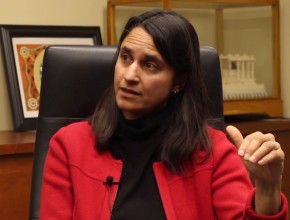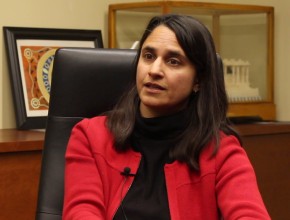Related McMaster Perspective episodes
Anand S, Jaeschke R. Peripheral artery disease. Part 1: General management and COMPASS. McMaster Textbook of Internal Medicine. https://empendium.com/mcmtextbook/interviews/perspective/192499,peripheral-artery-disease-part-1-general-management-and-compass. Published August 8, 2018.References
Eikelboom JW, Connolly SJ, Bosch J, et al; COMPASS Investigators. Rivaroxaban with or without Aspirin in Stable Cardiovascular Disease. N Engl J Med. 2017 Oct 5;377(14):1319-1330. doi: 10.1056/NEJMoa1709118. Epub 2017 Aug 27. PubMed PMID: 28844192.Mega JL, Braunwald E, Wiviott SD, et al; ATLAS ACS 2–TIMI 51 Investigators. Rivaroxaban in patients with a recent acute coronary syndrome. N Engl J Med. 2012 Jan 5;366(1):9-19. doi: 10.1056/NEJMoa1112277. Epub 2011 Nov 13. PubMed PMID: 22077192.
Please note that after the recording of this interview, in September 2018, Health Canada approved rivaroxaban in a dose of 2.5 mg in combination with aspirin 75 mg to 100 mg for the prevention of stroke, MI, and cardiovascular death, based on evidence from the COMPASS trial. Read more on the Bayer website.
Roman Jaeschke, MD: So this is what we knew before you started the large trial: COMPASS (Cardiovascular Outcomes for People Using Anticoagulation Strategies). Could you take us through how this trial was constructed, what was examined, and what were the results?
Sonia Anand, MD, PhD: This is a large trial of 27,395 patients. A number of investigators came together with the question. The question was, in a prior trial conducted by the TIMI (Thrombolysis in Myocardial Infarction) Study group in the United States in acute coronary syndromes a low dose of the direct factor Xa inhibitor rivaroxaban used on top of dual antiplatelet therapy reduced recurrent cardiovascular events and total mortality. So it was a promising signal that we could go from the atrial fibrillation dose of 20 mg a day to a much lower dose used together with antiplatelet therapy and prevent these outcomes. The worry with any anticoagulant therapy is the risk of bleeding. Things looked favorable in the ATLAS ACS (Anti-Xa Therapy to Lower Cardiovascular Events in Addition to Standard Therapy in Subjects with Acute Coronary Syndrome) 2 trial, and that was the idea behind COMPASS.
The patient population also required—we had a lot of discussion: Should we just include coronary artery disease patients, or should we broaden it? Because of some other trials our group has done previous to that, we decided we should include peripheral artery disease (PAD) patients. We had previously finished a large trial looking at warfarin and antiplatelet therapy in this group and there was an excess amount of bleeding, yet we know this group is high risk. So we set out to enroll at least 25% of the COMPASS population with PAD and the rest had established coronary artery disease.
Roman Jaeschke: So these were the people. What were the main interventions of clinical relevance?
Sonia Anand: It was a 3-arm randomized, double-blind, placebo-controlled trial. We studied 2 doses of rivaroxaban: The first arm was rivaroxaban 2.5 mg bid used together with aspirin. The second arm was rivaroxaban 5 mg bid without aspirin. The third arm was aspirin alone.
Roman Jaeschke: What happened next?
Sonia Anand: This was a massive undertaking: 600 centers, 33 countries, 27,395 patients randomized, about 9000 patients per group. Last year the trial was stopped early. The data and safety monitoring board recommended early stopping due to overwhelming benefit in favor of rivaroxaban 2.5 mg bid plus aspirin. That arm of the trial and those patients had a significantly lower risk of myocardial infarction (MI), stroke, and cardiovascular death, which was the primary outcome in the trial.
Roman Jaeschke: Statistically significant, that is, not being due to chance. How does it translate into actual numbers that we may understand?
Sonia Anand: Different people use different statistics. Certainly, there was a significant 24% relative risk reduction in favor of rivaroxaban with aspirin compared to aspirin alone, and this was highly statistically significant, with P = 0.001.
Roman Jaeschke: So you could cut down a quarter of events. Still, how does it translate into absolute numbers?
Sonia Anand: Another point I would like to make is that total mortality was also significantly lowered in the overall trial. When we think about the reduction of some events but causing bleeding on the other hand, we often look for a net benefit signal. Total mortality is often thought of as the ultimate net benefit. That was reduced by about 18% and was statistically significant.
Roman Jaeschke: In relative terms.
Sonia Anand: Yes. And I think that is very important. In terms of event rates and the absolute reductions, we look at the aspirin control arm event rate and that was around 5%. So we are really looking at a 25% reduction of the 5%. In the PAD population we know there usually is higher risk of these outcomes, and the control event rate was high at about 6.9%. So we get a greater relative reduction and also a greater absolute reduction. In PAD we often say for every 1000 patients treated, we would prevent 27 cardiovascular deaths, MIs, or strokes at the cost of causing 1 fatal and 1 critical organ bleed. That helps put it into perspective.
Roman Jaeschke: And this is over the duration of the trial, which was slightly over 2 years.Sonia Anand: Just about 2 years.
Roman Jaeschke: So you are saying that we could prevent roughly 30 events over 2 years. Looking at it differently, I believe we could prevent—per 1000 people treated per year—5 to 10 major events, 5 deaths, 6 or 5 amputations. How do you judge the clinical relevance? You have experience in this field. How do your patients judge it?
Sonia Anand: If we think about a PAD patient, I think we [need] to put it into context: What are they at risk of suffering? They are high risk for heart attack, stroke, and dying, but they are also relatively high risk for what we call major adverse limb events, which could be the cold, pulseless limb that may lead to amputation. So those types of events are important for a PAD patient. With this one therapy, we can reduce both types of events, and putting both the cardiovascular events and the limb events together, the relative risk reduction is around 30%, so slightly higher than for the cardiovascular events on their own. To my knowledge, there has been no therapy that has been shown to reduce major amputation and total amputation.
Some of the statin trials, kind of as a second type of analysis, have looked at it and it appears as though there is a reduction, but we set out with our main PAD question being, “Can we reduce these serious events?” and we do show quite an impressive relative reduction in major amputation. Although our absolute number of events was small, the risk reduction is in the range of 45% to 50%.
Roman Jaeschke: It sounds like you are pretty convinced on the usefulness of this therapy. Is there anything that stands in its way to becoming the standard?
Sonia Anand: I will say that of the PAD patients I see in clinic since COMPASS has finished, we do not have the drug available. When I assess them, I can see about two-thirds of my clinic population would be COMPASS-eligible.
Roman Jaeschke: What do you mean we do not have the drug? Rivaroxaban is everywhere.
Sonia Anand: Not at 2.5 mg bid. The dosage of 2.5 mg bid is not approved for use in the United States or Canada. It is approved in Europe, and that was based on the ATLAS 2 results. The North Americans did not approve it, the Europeans did. So at least in North America we do not have 2.5 mg available. We use 20, 15, and 10 mg for atrial fibrillation and deep vein thrombosis (DVT), but we do not have the lower dose. So at this point in time I am not prescribing it.
Roman Jaeschke: So you do not have it. Anything else that can stop us from using it?
Sonia Anand: I think there are 2 other considerations. We always try to balance benefits and risks, and there was an increased risk in major bleeds, around 1.6-fold increase. We used a very liberal definition of bleeding that was recommended to us by the Food and Drug Administration (FDA) to include any bleeds that led a patient or person to attend hospital. They did not need to be admitted, but anything that took them to a hospital [was included]. So we break down the bleeds, separating the severe, fatal, life-threatening bleeds from the bleeds that could be treated. About two-thirds of the bleeds in COMPASS are the ones that could be treated, either with a transfusion or an intervention. When we offset the serious bleeds with the benefits, it seems to be net favorable for the rivaroxaban 2.5 mg. So bleeding is a consideration. In the highest-risk–bleeding population we would not use this therapy. In fact, those patients did not make it into the trial. That was a key exclusion criterion.
The second barrier I see towards widespread use would be the cost of the drug. At this point in time, I do not know what the pharmaceutical companies will price this at, but I worry because at least in our local practice patients with PAD are often those who are on disability or out of work, who are smokers, and many times they cannot afford the other therapies that we recommend if they fall in that under-65-years-of-age category where they do not have health coverage. That is another concern I have: once the drug is available, what percentage of eligible patients will actually be able to use it?
Roman Jaeschke: Last question. In atrial fibrillation we use rivaroxaban—correct me if I am wrong—once a day. Why not use 2.5 mg once a day, or 5 mg once a day? Or do we need another 27,000 studies?
Sonia Anand: The reason why as we went lower with rivaroxaban, the dose went from once a day to twice a day, was based on a fair number of detailed studies of availability, peaks, and nadirs of the lower doses.
Roman Jaeschke: So there was a physiologic, biologic reason.
Sonia Anand: If you look at 2.5 mg, there is a nice peak but before 12 hours you basically are coming to nothing.
Roman Jaeschke: We will see with time whether everybody with coronary artery disease, peripheral vascular disease, and carotid artery disease will end up on 2.5 mg of rivaroxaban plus 100 mg—or 81 mg, I guess—of aspirin. Thank you very much.
Sonia Anand: Thank you.
Roman Jaeschke: I appreciate it. I hope it is useful to our audience.
 English
English
 Español
Español
 українська
українська











